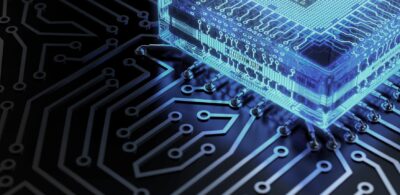Australian Federal Court makes trailblazing decision recognising AI systems as inventors
04 August 2021
In a decision that has received global media attention, the Australian Federal Court has found that inventions created by artificial intelligence (AI) systems are capable of patent protection. The Court found that an AI system can be an “inventor” under the Patents Act 1990 (Cth) (Act).
The decision (which may well be the subject of an appeal) is inconsistent with findings concerning related patent applications in the US, Europe and UK.
The Court considered that this outcome would incentivise innovation in the field of computer science and other areas of technology that rely on AI, including pharmaceutical research. Subject to any appeal, it remains to be seen whether Australian policy makers will share the Court’s view, and see Australia as a pioneer, or if they will be concerned by the economic impact of the Court recognising AI inventors in a way that is out of line with other major jurisdictions.
Background - the application
The decision concerned Australian Patent Application No. 2019363177 for “Food container and devices and methods for attracting enhanced attention” (Application), filed in the name of Dr Stephen Thaler.
Controversially, the inventor named in the Application is “DABUS, The invention was autonomously generated by an artificial intelligence”. DABUS is an AI system owned by Dr Thaler.
As we reported earlier this year, the Deputy Commissioner of Patents rejected the Application, on the basis that section 15(1) of the Act was inconsistent with an AI machine being treated as an “inventor”.
Dr Thaler sought judicial review of the Deputy Commissioner’s decision.
The appeal
The question before Justice Beach was whether DABUS was capable of being identified as the “inventor” for the purposes of the Patents Regulations 1991 (Cth) (Regulations). The Application itself has not yet been examined, and there has been no finding about its compliance with substantive requirements for patentability.
Justice Beach identified that “inventor” is not defined in the Act or the Regulations and that there is nothing which expressly prohibits an AI machine from being an inventor. His Honour rejected the argument that the ordinary meaning of “inventor” is limited to humans. His Honour was satisfied that linguistically, an inventor is an “agent” of invention, and is not limited to being a person. His Honour found that “inventor” is an “agent noun” which denotes the performance of a verb, like computer (computes), lawnmower (mows lawn) and dishwasher (washes dishes).
His Honour held that construction was not at odds with section 15 of the Act, which is directed to who may be granted a patent. Section 15(1) of the Act provides that a patent for an invention may only be granted to a person who:
- is the inventor; or
- would, on the grant of a patent for the invention, be entitled to have the patent assigned to the person; or
- derives title to the invention from the inventor or a person mentioned in paragraph (b); or
- is the legal representative of a deceased person mentioned in paragraph (a), (b) or (c).
Justice Beach found that Dr Thaler may be entitled to a patent under section 15(1)(b) or (c) even though the “inventor” is an AI system. His Honour found that “Dr Thaler, as the owner and controller of DABUS, would own any inventions made by DABUS, when they came into his possession”.
His Honour also found that section 15(1)(b) did not require the invention to be assigned from DABUS to Dr Thaler, either expressly or impliedly, for that section to apply (at [175]). His Honour was further satisfied that Dr Thaler could derive title to the invention for the purposes of section 15(1)(c), again without a written assignment to him (at [178]).
His Honour identified the important role played by AI systems in fields including pharmaceutical research, and was concerned not to “inhibit innovation not just in the field of computer science but all other scientific fields which may benefit from the output of an artificial intelligence system”. Justice Beach drew support from the objects clause in section 2A of the Act, which identifies that the purpose of the Act is to “promote economic wellbeing through technological innovation”.
His Honour also observed that the concept of “manner of manufacture” – the test for patent eligible subject matter – had widened due to the development of patent law in the 20th and 21st centuries as scientific discoveries inspire new technologies and saw “no reason why the concept of ‘inventor’ should not be seen in an analogously flexible and evolutionary way”.
Justice Beach’s decision clarifies that where an invention is the product of a non-human inventor (as Dr Thaler asserts in this case), patent protection remains possible. We note, however, that the patent application will still need to meet all of the other requirements for patentability before it is granted (as indeed, is the case here).
Key implications
Subject to any appeal, there are a number of key implications from this decision:
- Inventions generated through the use of AI systems where human “inventors” cannot be identified are capable of patent protection in Australia (subject to complying with other requirements of patentability). Justice Beach clearly viewed this outcome as consistent with the purpose of the patent system to incentivise innovation in computer science and related scientific fields.
- While patents are often drafted and prosecuted with a range of relevant jurisdictions in mind, applicants for Australian patents should consider the role played by AI systems and whether it is necessary or appropriate to identify an AI system as an inventor (or co-inventor). There is a significant body of case law devoted to determining the level of contribution to an invention which is required in order to be named as an inventor in a patent application. It may now be necessary to consider the role of any AI systems in conceptualising the invention.
- It remains to be seen how the identification of an AI system will impact the assessment of patent validity. The key validity requirement is that the invention involve an “inventive step”. That is, whether the invention would have been “obvious” to a person skilled in the art. Justice Beach suggested that in the future the skilled person may be taken to “be assisted by or [have] access to artificial intelligence”. As Justice Beach observed, this may make it more difficult for an invention to satisfy the inventive step test. It remains to be seen how inventive step will be assessed in this case.
- A consequence of Justice Beach’s decision is that Australian patent law is out of kilter with other key jurisdictions. It is unclear whether Australian policy makers will see this change as economically desirable. Similarly, in any appeal the Commissioner may question whether there is sufficient evidence available to safely assume that the outcome is consistent with the object of the Act which includes that “the patent system balances over time the interests of producers, owners and users of technology and the public”.
We will watch this space with interest to see whether an appeal is filed and if any changes are implemented by the Australian Patents Office as a consequence of this decision.
Authors
Tags
This publication is introductory in nature. Its content is current at the date of publication. It does not constitute legal advice and should not be relied upon as such. You should always obtain legal advice based on your specific circumstances before taking any action relating to matters covered by this publication. Some information may have been obtained from external sources, and we cannot guarantee the accuracy or currency of any such information.






